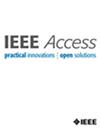CLF3D: A Coarse-Labeling Framework to Facilitate 3D Object Detection in Point Clouds
IF 3.4
3区 计算机科学
Q2 COMPUTER SCIENCE, INFORMATION SYSTEMS
引用次数: 0
Abstract
Tremendous scenarios have to be considered for autonomous driving, leading to extremely large amount of point cloud data which need to be labeled for model training. Manually labeling such data is labor-intensive and highly expensive. In this paper, we propose CLF3D, a simple and effective coarse-labeling framework designed to improve existing automated labeling methods by fully leveraging scene-specific information in the unlabeled data to significantly enhance detection accuracy. Specifically, CLF3D first utilizes a pre-trained model to generate initial pseudo-labels, which are subsequently refined using a two-stage filtering strategy in combination with an instance bank built from high-quality annotated instances. These refined pseudo-labels are then used to fine-tune the model, progressively improving its detection performance on unlabeled data. Through iterative refinement of pseudo-labels, the model parameters, and the instance bank, CLF3D continuously improves label quality and accuracy. Experimental results demonstrate that the proposed method improves the detection accuracy by up to 14% compared to the originally pre-trained model across datasets of various sizes. This means our approach can reduce 14% of the manual workload for labeling point cloud data in comparison to the existing methods.CLF3D:一种促进点云中3D目标检测的粗标记框架
自动驾驶需要考虑的场景非常多,导致需要对大量的点云数据进行标记以进行模型训练。手动标记这些数据是劳动密集型的,而且成本很高。在本文中,我们提出了一个简单有效的粗略标记框架CLF3D,旨在改进现有的自动标记方法,充分利用未标记数据中的场景特定信息,显著提高检测精度。具体而言,CLF3D首先利用预训练模型生成初始伪标签,随后使用两阶段过滤策略结合由高质量注释实例构建的实例库对其进行细化。然后使用这些改进的伪标签对模型进行微调,逐步提高其对未标记数据的检测性能。通过对伪标签、模型参数和实例库的迭代细化,CLF3D不断提高标签质量和准确性。实验结果表明,在不同规模的数据集上,与原始预训练模型相比,该方法的检测精度提高了14%。这意味着与现有方法相比,我们的方法可以减少14%的人工工作量来标记点云数据。
本文章由计算机程序翻译,如有差异,请以英文原文为准。
求助全文
约1分钟内获得全文
求助全文
来源期刊

IEEE Access
COMPUTER SCIENCE, INFORMATION SYSTEMSENGIN-ENGINEERING, ELECTRICAL & ELECTRONIC
CiteScore
9.80
自引率
7.70%
发文量
6673
审稿时长
6 weeks
期刊介绍:
IEEE Access® is a multidisciplinary, open access (OA), applications-oriented, all-electronic archival journal that continuously presents the results of original research or development across all of IEEE''s fields of interest.
IEEE Access will publish articles that are of high interest to readers, original, technically correct, and clearly presented. Supported by author publication charges (APC), its hallmarks are a rapid peer review and publication process with open access to all readers. Unlike IEEE''s traditional Transactions or Journals, reviews are "binary", in that reviewers will either Accept or Reject an article in the form it is submitted in order to achieve rapid turnaround. Especially encouraged are submissions on:
Multidisciplinary topics, or applications-oriented articles and negative results that do not fit within the scope of IEEE''s traditional journals.
Practical articles discussing new experiments or measurement techniques, interesting solutions to engineering.
Development of new or improved fabrication or manufacturing techniques.
Reviews or survey articles of new or evolving fields oriented to assist others in understanding the new area.
 求助内容:
求助内容: 应助结果提醒方式:
应助结果提醒方式:


